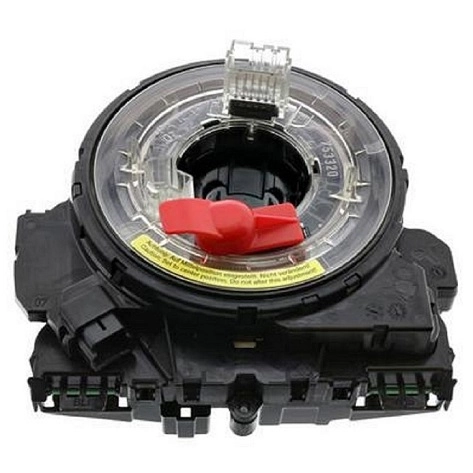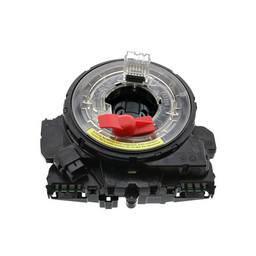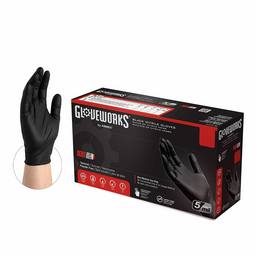Welcome to our step-by-step guide on replacing your Porsche Cayenne’s clock spring and steering wheel. Ideal for DIY enthusiasts, this tutorial is designed to walk you through this essential maintenance task, blending cost-effectiveness with the satisfaction of personal involvement in your vehicle’s care.
The Porsche Cayenne’s steering wheel is more than just a directional tool; it’s a critical interface for your vehicle’s safety and control systems. The Porsche Cayenne’s clock spring or steering angle sensor is central to its function, which connects the wheel’s electrical components, including airbags and control buttons. Over time, these parts may wear out or sustain damage, necessitating a replacement.
In this guide, we’ll cover everything from identifying wear signs to the actual replacement process. While this task demands precision and careful handling, especially with safety components, our clear instructions aim to simplify it for you. Get ready to ensure your Porsche Cayenne continues delivering top-notch performance and safety with your hands at work.
Porsche Cayenne Clock Spring — Functions Explained
The Porsche Cayenne’s clock spring plays a pivotal role in the intricate workings of its steering system, integrated seamlessly with the steering angle sensor. This integration is key to understanding the multifaceted functions of this component.
The Porsche Cayenne’s clock spring is a special ribbon wire that maintains a constant electrical connection to the steering wheel’s various controls, even as you turn the wheel. This includes connections to the vehicle’s airbag system, horn, and any vehicle interface or cruise control buttons embedded in the Porsche Cayenne steering wheel. Its design allows it to coil and uncoil gracefully, enabling free steering wheel rotation while keeping these critical connections intact.
On the other hand, the steering angle sensor is vital for various vehicle dynamic systems like the Porsche Stability Management (PSM), Porsche Torque vectoring (PTV), headlight controls, and more. It accurately measures the angle at which the Porsche Cayenne’s steering wheel is turned and the rate at which it is being rotated. This data is crucial for systems that aid in stability and handling, especially in adverse driving conditions.
Together, the Porsche Cayenne’s clock spring and the steering angle sensor ensure not just operational functionality but also contribute significantly to the safety and driving dynamics of your Porsche Cayenne. Their seamless operation is essential for the sophisticated electronic systems that define your vehicle’s performance and safety standards.
Symptoms of a Bad Porsche Cayenne Clock Spring
Recognizing the signs of a malfunctioning Porsche Cayenne clock spring/steering angle sensor ensures the vehicle’s optimal performance and safety. Here are the primary symptoms to be aware of:
Warning Messages — A defective Porsche Cayenne clock spring/steering angle sensor might trigger a multitude of warning messages in the instrument cluster, such as PSM warning, Chassis System warning, headlight control warning, and PDCC warning. This is because the integrated steering angle sensor is essential for multiple drive assistance systems, and its failure will affect these systems, too.
Airbag Warning Light — A common indicator of a failing Porsche Cayenne clock spring is activating the airbag warning light on the dashboard. This happens because your Porsche Cayenne’s clock spring maintains the electrical connection to the airbag system.
Diagnostic Trouble Codes (DTCs) — Certain DTCs related to the Porsche Cayenne clock spring/steering angle sensor may be activated when a malfunction occurs. An OBD-II scanner can reveal a DTC 801103 Steering Angle Sensor, signal implausible on steering wheel electronics C.U. Some control units like the DME, PSM, Headlight control, and others will have a DTC 030A0E Steering Angle Sensor, function restriction too!
Loss of Steering Wheel Function Controls — If the controls on your Porsche Cayenne’s steering wheel, such as audio, cruise control, or the horn, start to malfunction or stop responding, it could indicate a problem with the Porsche Cayenne’s clock spring, which connects these controls to the car’s electrical system.
Prompt attention to these symptoms is essential, as a compromised Porsche Cayenne clock spring/steering angle sensor can affect your Car’s convenience features and critical safety systems. Regular maintenance and checks prevent these problems and ensure a safe, enjoyable driving experience.
Can You Drive with a Bad Steering Angle Sensor?
Driving your Porsche Cayenne with a malfunctioning steering angle sensor is technically possible, but it’s far from advisable. The vehicle may still operate, yet the safety and performance implications are significant and should not be underestimated.
The steering angle sensor is integral to the functioning of various driver assistance systems. A malfunctioning sensor can lead to the impairment of:
Porsche Stability Management (PSM) — PSM relies on accurate data from the steering angle sensor to modulate brake pressure during sudden stops or on slippery surfaces. A faulty sensor can compromise the PSM’s ability to prevent wheel lock-up, increasing the risk of uncontrolled skids during emergency braking.
Porsche Traction Management (PTM) and Porsche Torque Vectoring (PTV) — These systems maintain traction and stability by distributing power to the wheels that need it most, particularly in dynamic driving conditions. A bad sensor could result in incorrect readings, affecting the vehicle’s handling and stability.
Other Driver Assistance Systems — Systems like lane-keeping assist, adaptive cruise control, and headlight control depend on the steering angle sensor. These systems may fail or operate erratically with a defective sensor, leading to unsafe driving conditions.
In addition to the safety concerns, driving with a faulty sensor can be particularly annoying due to the intermittent warning messages and tones that typically accompany such issues. Every time you start the car, you might be greeted with warning lights and audible alerts, which can constantly remind you of the underlying issue.
While your Porsche Cayenne might still be drivable with a faulty steering angle sensor, the reduced reliability of crucial systems like ABS and PTV, coupled with the annoyance of persistent warnings, make it advisable to promptly address any issues with the steering angle sensor. This maintains the safety, performance, and driving comfort of your vehicle.
Does Disconnecting Battery Reset Steering Angle Sensor?
Disconnecting your Porsche Cayenne’s battery does reset the steering angle sensor’s values. This action leads to losing the sensor’s reference point, which is vital for its accurate operation. Subsequently, a crucial follow-up process is required: the steering angle calibration and teaching the steering end-stop.
When the battery is reconnected, the sensor no longer retains correct data about the steering wheel’s position when the wheels are aligned straight. Therefore, recalibration is essential to re-establish this baseline for the sensor to function correctly. This recalibration process involves centering the Porsche Cayenne’s steering wheel and teaching the system the extreme end-stops by turning the steering to its full lock in both directions.
Performing this recalibration is critical. Without it, there could be inaccuracies in the sensor readings, adversely affecting the performance of systems that rely on this data, such as ABS, PTV, and various stability controls. Hence, recalibrating the steering angle sensor after a battery disconnect is recommended and necessary for maintaining your vehicle’s safety and optimal performance.
Replacing Porsche Cayenne Clock Spring
When it comes to performing a DIY repair, especially replacing your Porsche Cayenne’s clock spring, it’s essential to approach the task with a focus on safety and the use of proper tools. The Porsche Cayenne’s clock spring is a critical component directly linked to several key functions, including safety features like the airbag system. Therefore, ensuring a meticulous and cautious approach is paramount.
Safety should be your top priority while replacing your Porsche Cayenne’s clock spring. Before beginning the repair, it’s crucial to disconnect the vehicle’s battery to prevent any accidental deployment of the airbag. Additionally, wearing safety glasses and gloves is advisable to protect yourself and your car during the process.
Having the right set of tools is as important as the repair itself. The Porsche Cayenne’s clock spring replacement requires specific tools for precision and to avoid damage to the new part or the surrounding components. Using inappropriate tools can lead to incorrect installation or damage, compromising your Porsche Cayenne’s clock spring functionality and related systems.
Remember, while DIY repairs can be fulfilling and cost-effective, they also come with a responsibility toward your safety and the vehicle’s integrity. A successful DIY repair is done safely, correctly, and with the right tools.
- Working gloves
- Safety goggles
- ½” ratchet and spanner set
- Torx screwdriver set
- 3mm flat screwdriver
- Allen key wrench set
- M12 triple square bit socket
- Plastic trim remover set
- Fine-tip marker
Got everything ready? Cool! Roll up your sleeves and get ready to work. Park your car in a well-lit area with its steering wheel and tires in a straight-ahead position. Get ready for this DIY adventure!
Removing Airbag
As we mentioned previously, you’ll have to remove the battery connection first to make sure your airbag won’t go BANG!!! on you. Remove your driver seat’s right forward mount cover to do this on your Porsche Cayenne. Under there, you will find the battery’s ground strap. Use a 13mm socket to remove it, and use a piece of rag to isolate the ground strap and prevent it from touching the body ground again.
Next, you’ll have to remove the driver-side airbag. This depends on your Porsche Cayenne’s steering wheel; don’t worry, this guide will cover both of them, and no one will be left out.

For the older generation of Porsche Cayenne’s steering wheel, locate the access hole at the rear of the lower steering wheel spoke. A tip to locate it is to turn the Porsche Cayenne’s steering wheel to the right so that the lower part of the steering wheel can be seen from the left side. Now, depending on your steering wheel, this access hole may not be pronounced, especially if it is covered with leather.
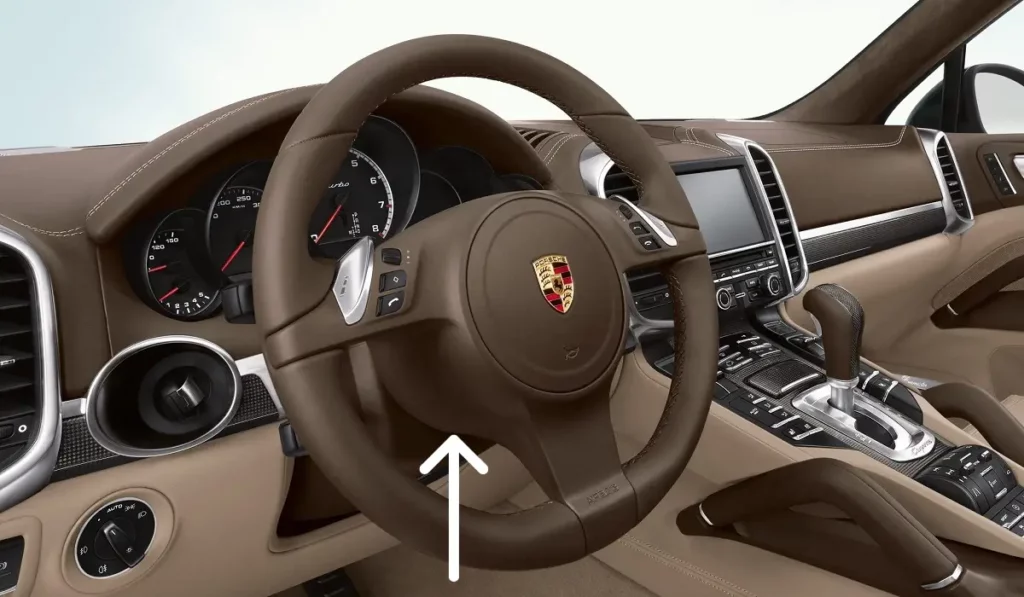
To identify it, you will find a part of the stitching with a skip. Use a T25 screwdriver to insert it into the access hole. In there, you will feel a spring-loaded mechanism. Push it, and the airbag will pop out slightly. Pull the airbag out and remove the horn ground and two airbag connections. The two color-coded airbag connections can be removed by disengaging the orange lock and pulling the wire upwards.
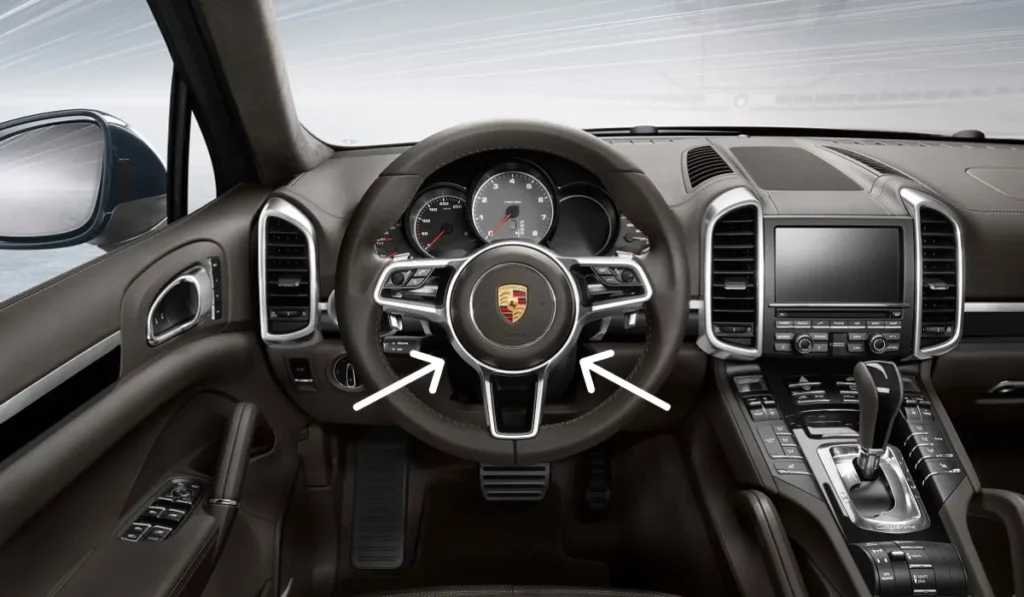
As for the newer generation Porsche Cayenne’s steering wheel, the access holes are located just under the left and right steering wheel spokes. Use a T25 screwdriver to insert it into the access holes. You should feel the airbag release spring mechanism. Once both spring mechanisms have released the airbag, the airbag will slightly pop out. Pull it out and disconnect the two airbag connections.

Always store the airbag in a safe location, preferably from where no kids can reach without the risk of it falling down. It should also be stored upright — the Porsche logo facing up. That’s it, the airbag was removed safely!
Removing Porsche Cayenne’s Steering Wheel
To remove your Porsche Cayenne’s steering wheel, you’ll have to remove the Porsche Cayenne clock spring’s connection, and if your car is equipped with a steering wheel heater, you’ll have to remove its connector, too. Both connectors have a release tab that must be pushed in for it to be released. A small flat screwdriver will do the trick if you have big fingers.
Once both connectors have been removed, use an M12 triple square to remove the steering wheel bolt. Remember to mark the steering wheel and steering column with a fine-tip marker before pulling the Porsche Cayenne’s steering wheel out. This ensures you install your Porsche Cayenne’s steering wheel again at the right angle. You don’t want your steering wheel tilted once you are done with this DIY, right?
Removing Steering Column Cover
Once your Porsche Cayenne’s steering wheel is removed, you will find an access notch on both sides of the cover. Insert a small flat screwdriver there and unclip the top cover of the steering column. Fold the cover up near the instrument cluster. Unscrew both T20 screws just above the clip slot.
Next, if your car is equipped with an electric steering column adjuster, you will have to remove the switch first to access the screw under it. To do this, insert a small flat screwdriver on its access notch and release its retaining clip. Once the switch is removed, you’ll see the hidden screw that needs to be removed. You’ll have to remove the other two screws as well, holding the lower steering column cover.
For those with manual adjustment, you’ll have to remove the handle of the steering column adjustment. To do this, you’ll have to remove the screw that holds it in place. Then remove the two screws as well that hold the lower steering column cover.
Removing Stalk Switch Assembly
Once the lower steering column cover is removed, you must remove the wiring connectors that go to the switch stalk assembly. Just press the release tab on the connectors of the switch connector and airbag connection (yellow connector) to remove them. Then, remove the switch stalk assembly by loosening the clamp that holds it to the steering column. To do this, loose the 5mm hex screw on the clamp, and the switch assembly should easily slide out.
Removing Clock Spring
Place the switch stalk assembly on a work table and remove the small T8 screw that holds the Porsche Cayenne’s clock spring to the switch stalk assembly. Then, you’ll have to remove the two connectors from the switch stalk to the Porsche Cayenne’s clock spring. Release the tab that holds it in place and pull the connector out by holding it from the connector itself. Do not pull on the wires, OK?
Once done, you’ll have to release the four clips that hold the Porsche Cayenne’s clock spring from the assembly. Use a small flat screwdriver to do this. Once all four clips are disengaged, the Porsche Cayenne clock spring should be removed from the switch stalk.
Installing New Porsche Cayenne Clock Spring
Installing a new Porsche Cayenne clock spring is just the reverse of the removal, with just some added tips to ensure that everything you have worked so hard for on this DIY will be perfect. One of them is to ensure that the red tab on the new cover will only be removed once you are ready to install your Porsche Cayenne’s steering wheel. This tab is on a new part and placed there to ensure that the Porsche Cayenne clock spring never rotates. It covers a mechanical pin lock that, if pushed down, will enable the Porsche Cayenne clock spring to turn.
Lastly, we must re-program, re-code, and re-calibrate the new Porsche Cayenne clock spring/steering angle sensor. Sadly, most of the generic OBD diagnostics tools can only do calibration and even coding. You’ll have to obtain a code from Porsche to perform the programming; only a PIWIS tester can do it. Only Porsche-authorized dealers can perform this, but the good thing is. The hard part is done; you’ll only have to pay for the programming. You wouldn’t have to pay an exorbitant amount for something so easy! Cool right?
Choose eEuroparts.com for your next clock Porsche Cayenne DIY repair!
At eEuroparts.com, we’re dedicated to supporting your DIY repairs, particularly when it comes to replacing the Porsche Cayenne’s clock spring. Our extensive selection of high-quality parts is specifically designed to meet the needs of your Porsche, ensuring both compatibility and reliability. With our commitment to quality, we provide a range of Porsche Cayenne clock springs that adhere to the highest standards, ensuring your vehicle maintains its exceptional performance.
Our expertise extends beyond just providing parts. We offer comprehensive support to assist you in selecting the right components, coupled with valuable advice on installation, making your DIY journey smooth and successful. Understanding the importance of budget-friendly solutions, our competitive pricing ensures your repairs are both affordable and accessible. Plus, with our fast and reliable shipping, you can trust that your Porsche Cayenne will be back on the road safely and swiftly, backed by the quality and care of eEuroparts.com.

